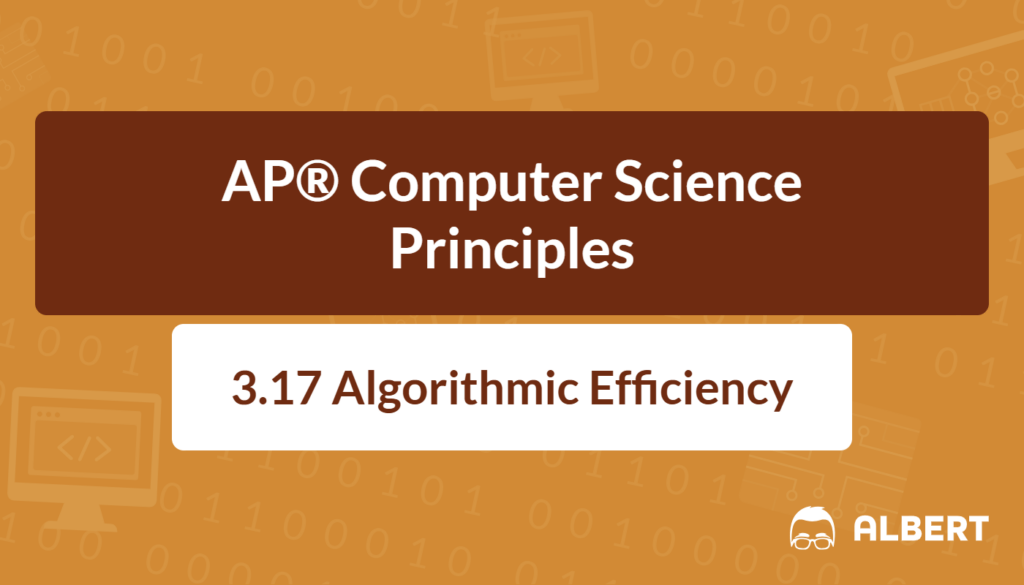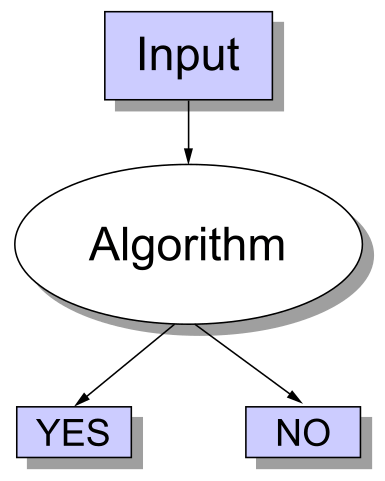Algorithm efficiency is a crucial concept in computer science. It focuses on the resources—like time and memory—that an algorithm requires to run. Mastering this idea helps students understand how to design solutions that can handle large or complicated tasks. It also prepares students to tackle diverse problems, both on the AP® exam and in real-life applications. Therefore, it is essential to learn how to compare and rate different approaches to problem-solving.
Algorithm efficiency matters because some methods are simply too slow when handling bigger inputs. By recognizing efficient algorithms, developers can avoid unnecessary calculations and make software run faster. This guide offers a clear explanation of efficiency principles so that learners can confidently analyze and optimize their own code.
What We Review
What Is an Algorithm?
An algorithm is a detailed set of instructions that completes a task or solves a problem. It is like a recipe, outlining every step needed to achieve a goal. Good algorithms share three qualities: clarity, effectiveness, and finiteness. Clarity ensures the steps are easy to follow. Effectiveness means each step is doable in a real computing system. Finiteness guarantees that the process will end.
Imagine an algorithm for making a sandwich:
- Take two slices of bread.
- Spread peanut butter on one slice.
- Spread jelly on the other slice.
- Press the slices together.
- Serve the sandwich.
Each step is clear, finishes in finite time, and is easy to do in the kitchen. This makes the process an excellent example of a simple algorithm.
The Concept of Efficiency
Algorithm efficiency measures how well an algorithm uses computational resources, like processing time and memory, as the input size increases. On AP® exams, input size typically appears as “n,” representing the number of items or elements. When “n” grows, a slow approach might take hours or days, while a faster one could produce results in seconds.
For instance, consider two sorting algorithms that handle a list of names. One algorithm might finish quickly, regardless of list size. Another could struggle as the list expands. Therefore, understanding algorithm efficiency helps students pick solutions that can handle big data without collapsing under the load.
Classifying Algorithms by Efficiency
Algorithms can usually be categorized based on how they scale with input size:
- Constant time: Execution time does not change, no matter how large “n” is.
- Linear time: Execution time grows proportionally to the input size.
- Square time: Performance deteriorates more noticeably, often found in naive nested loops.
- Cubic time: Yet more costly, primarily in triple-nested loops or similar designs.
- Exponential time: Execution time doubles with each added input unit, leading to massive slowdowns.
- Factorial time: For each new element, the algorithm tries nearly all possible combinations, becoming extremely slow.
Algorithms that run in constant, linear, square, or cubic time are usually considered reasonable. However, exponential or factorial ones often cross into “unreasonable” territory because they take too long as “n” grows.
Decision Problems vs. Optimization Problems
A “decision problem” asks a yes/no question, such as “Is there a path from city A to city B?” A “decision problem” often checks if a condition is met. In contrast, an “optimization problem” searches for the best possible solution, like “What is the shortest path from city A to city B?”
In practical terms, decision problems sometimes act as building blocks for optimization problems. First, one might determine if a path exists. Next, one might refine the approach to figure out an optimal route. Both types of problems are fundamental in algorithm design and shape the complexity of the underlying solutions.
Heuristics: An Alternative Approach
Students often ask, “What does heuristic mean?” A heuristic is a method designed to quickly produce a valuable but not guaranteed perfect solution. When an exact solution requires an unreasonable amount of time, a heuristic can step in. This is especially useful if a problem’s input is large or if an exact method is too time-consuming.
For example, Google Maps uses heuristics to give driving directions. Instead of checking every possible road to find the absolute best route, it uses shortcuts or rules of thumb. As a result, it can offer solutions that are “good enough,” avoiding extreme delays. Heuristics are helpful when a good-enough answer is more practical than an exact, time-intensive approach.
Measuring Algorithm Efficiency
There are two main ways to measure algorithm efficiency:
- Formal or Mathematical Analysis: Uses big-O notation (like O(n)) to predict runtime growth.
- Informal Estimation: Counts the number of operations or loops in the code to gauge performance.
Here is a basic code snippet that finds the maximum value in a list:
PROCEDURE findMax(numbers)
{
maxVal ← numbers[1]
FOR EACH item IN numbers
{
IF(item > maxVal)
{
maxVal ← item
}
}
RETURN maxVal
}Line by line:
- maxVal ← numbers[1]→ Initialize the maximum value to the first element.
- FOR EACH item IN numbers → Loop through the list.
- IF(item > maxVal) … → Compare the current element to the current maximum.
- RETURN maxVal → Output the highest number found.
This algorithm visits each element exactly once, so it grows linearly with the size of the array (O(n)). Notice how counting the loop’s executions gives a good sense of its efficiency.
Examples of Algorithm Efficiency in Real Life
Algorithm efficiency affects many everyday tasks. Social media feeds, for instance, rely on efficient navigation and filtering algorithms to quickly show posts based on preferences. Recommendation systems like those on streaming platforms track what shows are available and recommend them rapidly using specialized data-processing techniques. Web search engines scan billions of pages instantly, using refined sorting and ranking algorithms. This efficiency determines how smoothly users can interact with technology, which is why algorithm design is so important.
On a smaller scale, smartphone navigation apps must calculate travel routes without draining the device’s battery or taking minutes to display directions. Therefore, these apps often employ algorithms that are both efficient and heuristic-driven, prioritizing speed over a perfect path.
Quick Reference Vocabulary Chart
- Algorithm – A step-by-step set of instructions used to solve a problem
- Algorithm Efficiency – An estimation of the resources (time, memory) used by an algorithm as input size grows
- Decision Problem – A problem with a Yes/No answer (e.g., is there a path from A to B?)
- Optimization Problem – A problem aiming to find the best solution among many (e.g., the shortest path from A to B)
- Heuristic – A simplified approach that can offer a good-enough solution quickly, though not always the optimal one
- Input Size (n) – The number of items or elements the algorithm processes
- Formal Measurement – Mathematical analysis of runtime (e.g., Big-O notation)
- Informal Measurement – Roughly estimating the number of operations in an algorithm
Conclusion
In conclusion, algorithm efficiency is vital to building fast, reliable, and scalable solutions. Understanding the difference between polynomial and non-polynomial time complexities allows programmers to see why some algorithms are more practical than others. Decision problems and optimization problems shape how an algorithm handles a challenge, while heuristics can save the day in situations where a perfect solution is either impossible or takes too long.
It is helpful for students to keep these concepts in mind when writing their own code. By estimating how many steps an algorithm needs, one can quickly spot logical bottlenecks. Above all, it is a useful skill that stretches beyond exam prep and into real-world development.
Sharpen Your Skills for AP® Computer Science Principles
Are you preparing for the AP® Computer Science Principles test? We’ve got you covered! Try our review articles designed to help you confidently tackle real-world AP® Computer Science Principles questions. You’ll find everything you need to succeed, from quick tips to detailed strategies. Start exploring now!
- AP® Computer Science Principles 3.14 Review
- AP® Computer Science Principles 3.15 Review
- AP® Computer Science Principles 3.16 Review
Need help preparing for your AP® Computer Science Principles exam?
Albert has hundreds of AP® Computer Science Principles practice questions and full-length practice tests to try out.









